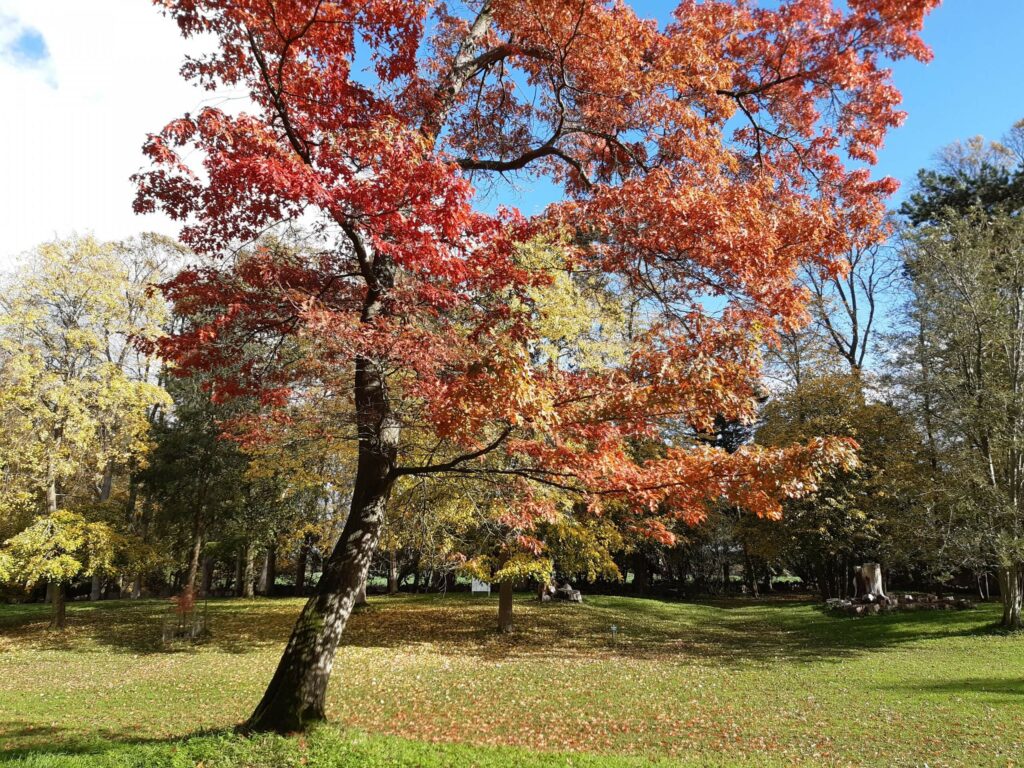Our scarlet oak is so photogenic, in autumn but also in spring, and this year it and other oaks, beeches and chestnuts have produced loads of fruit. A bountiful year such as this is known as a “mast year”, the last one was 2017. The Woodland Trust sets out a theory that trees have mast years in order to ensure that some of their seeds germinate – they do not produce bumper quantities of mast every year because that just encourages increasing populations of the creatures that eat mast! But why do all trees do it the same year? This is possibly down to climate and weather – or the trees spreading the word!
It was a glorious day at the Gardens – good for shifting leaf mold and manure, giving herbaceous plants a warm cover for the winter and replenishing the nutrients in the vegetable beds, to enable good cropping next year.
It was lovely to see a few more visitors enjoying our Open Thursdays, which run to the end of November.


